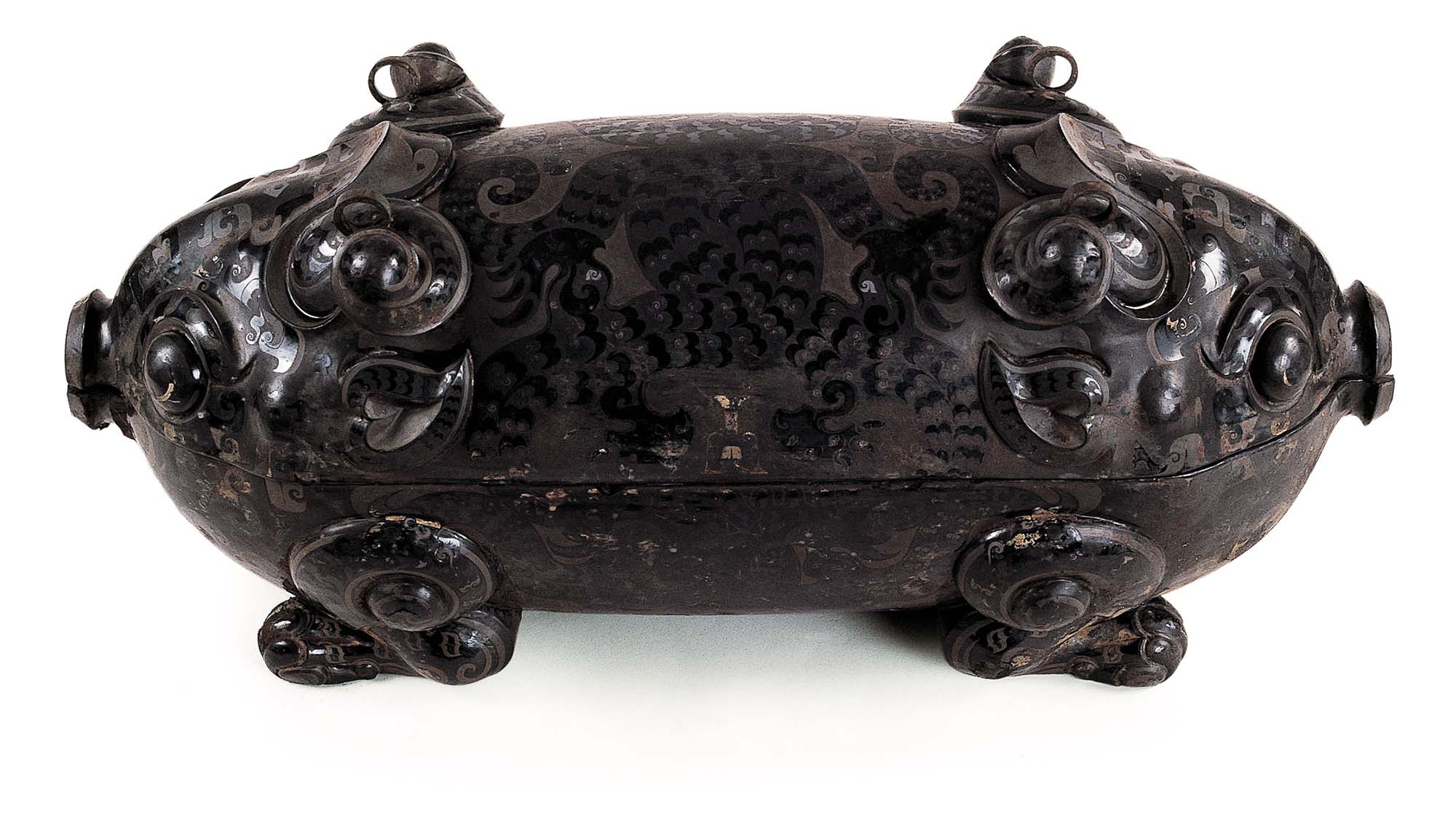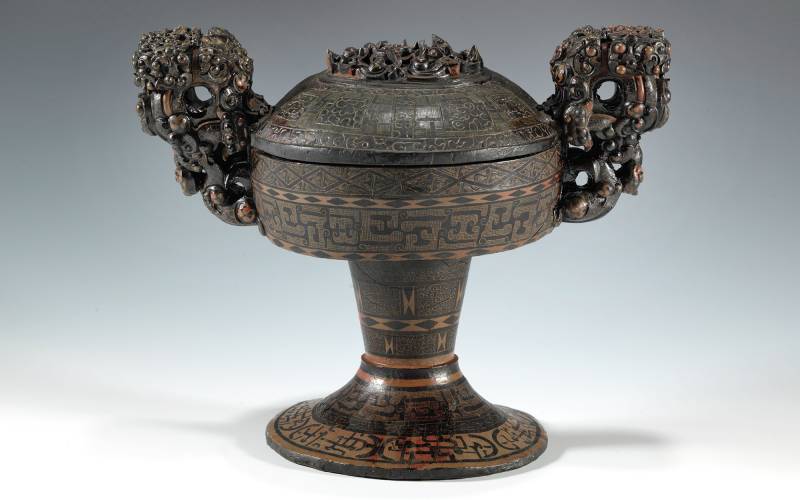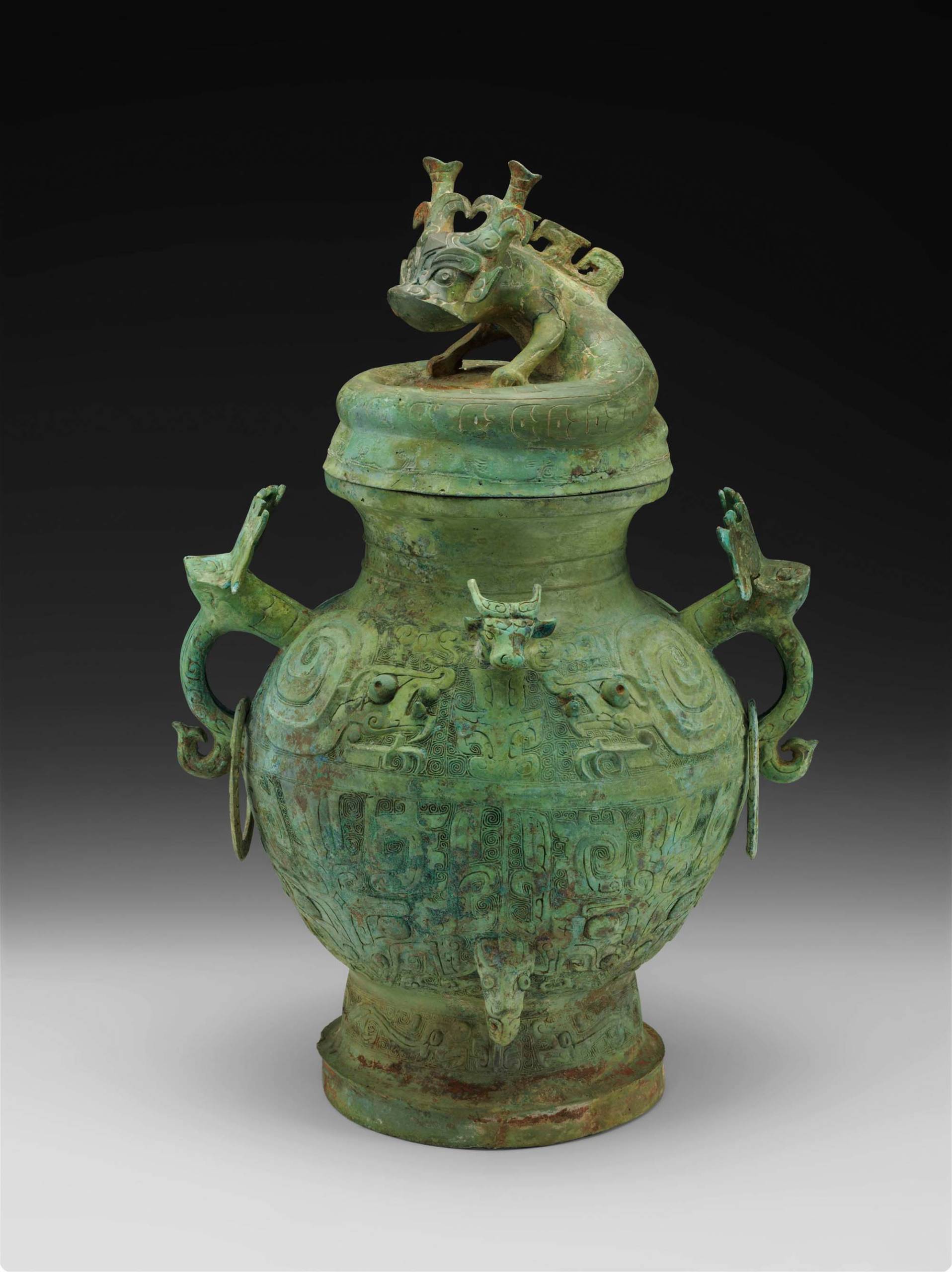A wine cooler, a five-pound gold cup and a whole lot of cauldrons are a few of the ancient items you can find at the Asian Art Museum’s new Phoenix Kingdoms exhibit, which is open to the public from April 19 to July 22.
“At the beginning of the exhibit you seem to be going into a crack in time — a time tunnel — transporting you to the ancient world,” museum director Jay Xu said at a recent preview event.
Nicknamed “Hot Pot Time Machine” by associate communications director Zac Rose, the exhibit showcases over 150 artifacts from the Zhou Dynasty, all found in the tombs of the nobility.
Many of the tombs found in modern day Hubei province in central China were waterlogged by lakes and rivers, which will have you thinking, “Looks pretty good for a 2,000-year-old conjoined-pig food container.” Apparently, water submersion — and the absence of oxygen — was just what the doctor ordered for ancient, lacquered wood.

The trove paints a picture of the lives of the rich and powerful in two vassal states known as Chu and Zeng, said museum curator Fan Jeremy Zhang during a tour of the exhibit. The two had an ongoing rivalry during the Warring States period in China, which lasted from around 475 BCE to 221 BCE.



